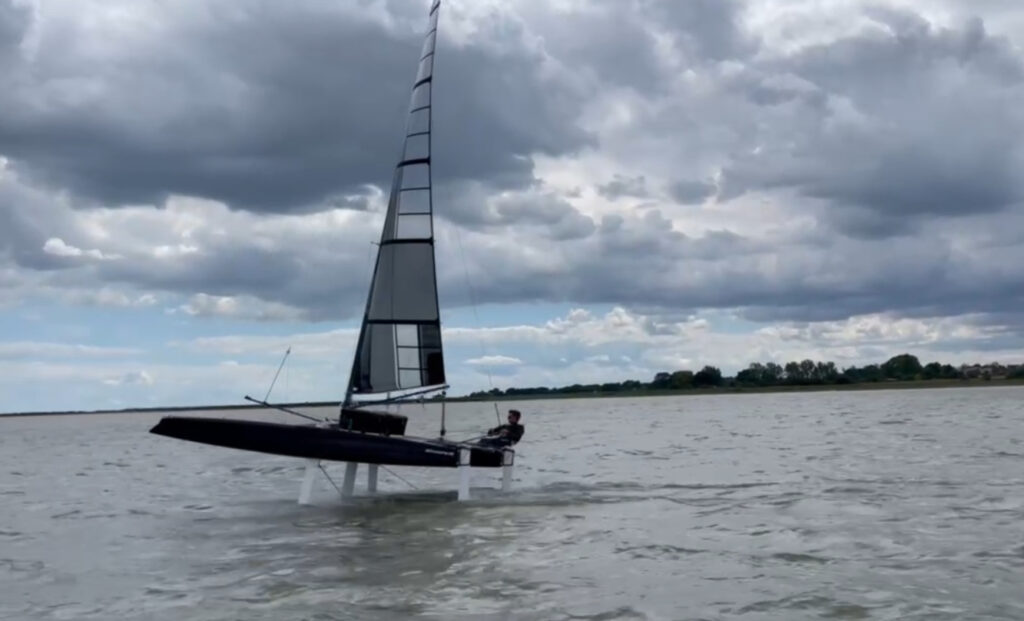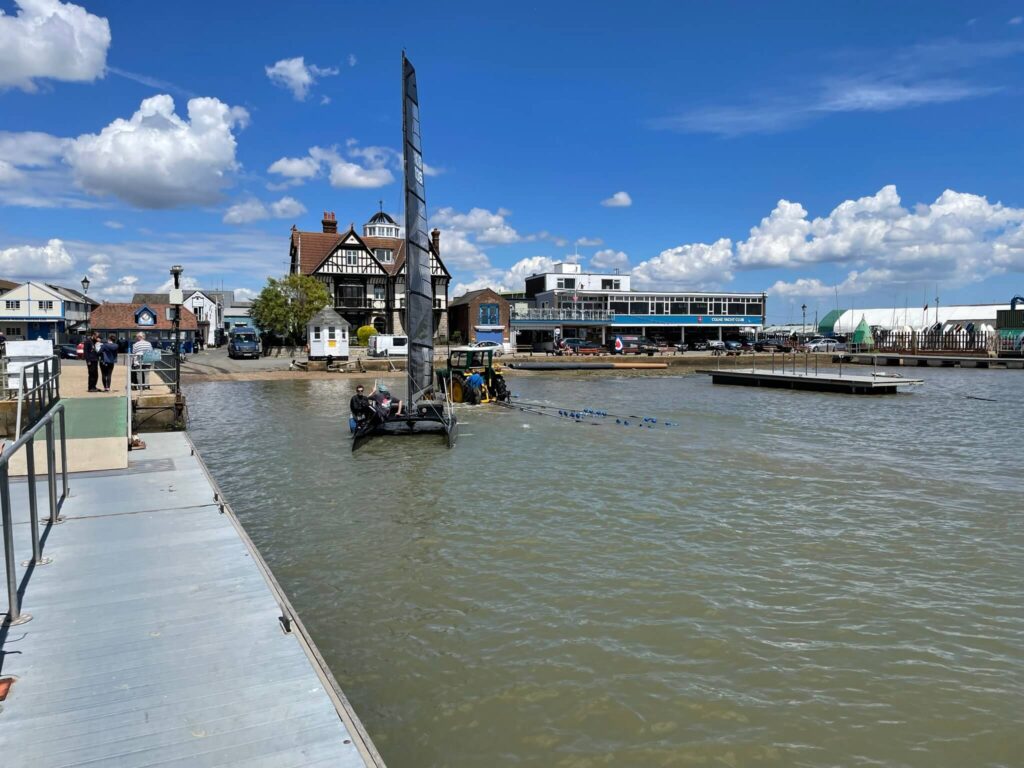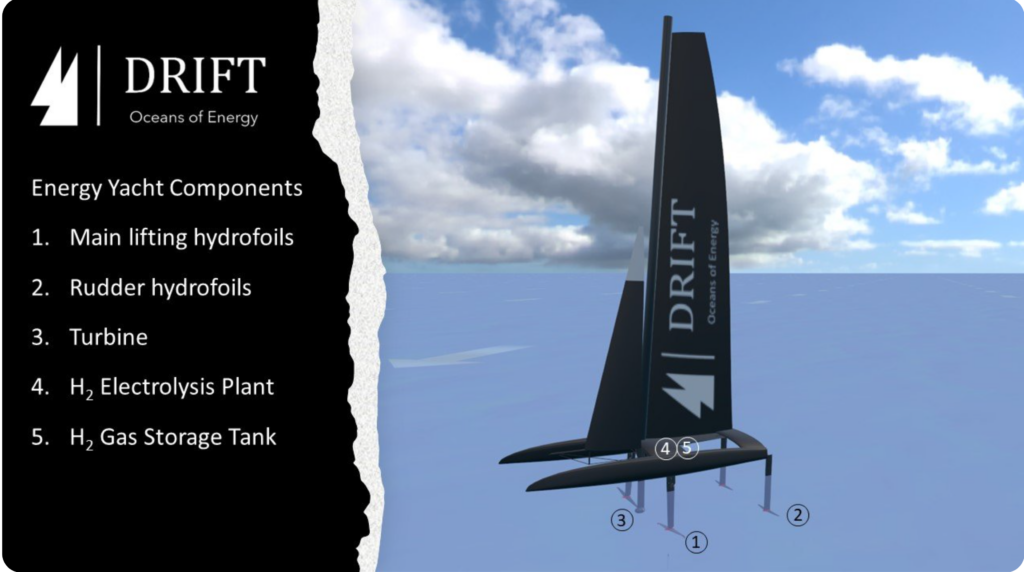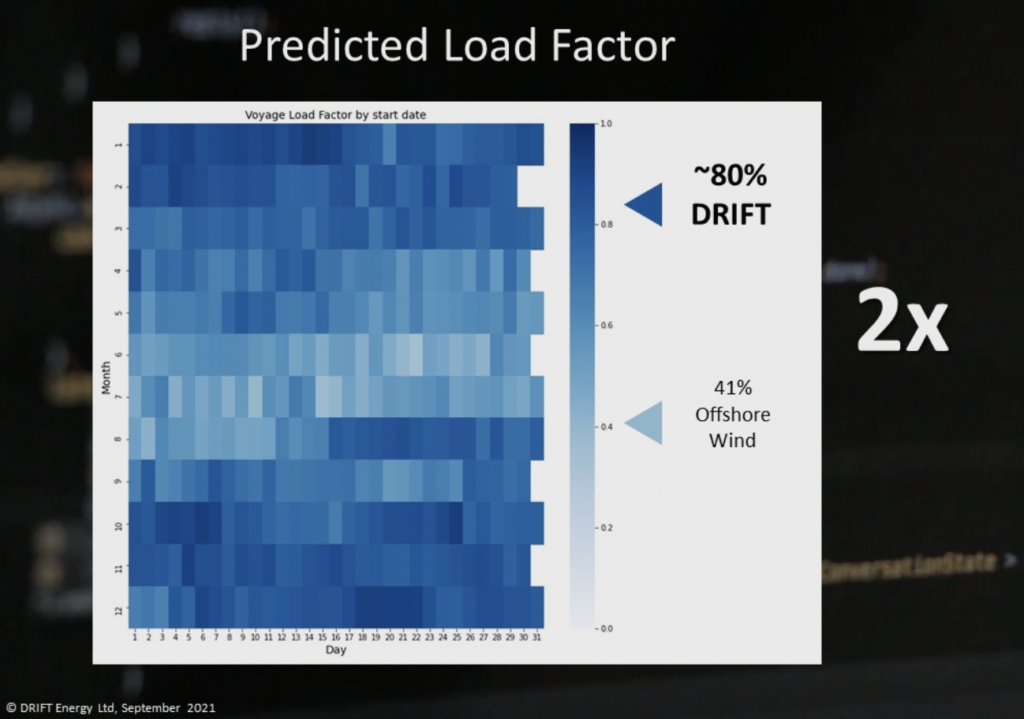WATCH: ‘Breakthrough’ as catamaran produces hydrogen at sea on maiden voyage

British start-up, Drift Energy has confirmed a major breakthrough after successfully producing storable hydrogen energy from its new hydrofoil sailing catamaran.
The firm says this is the world’s first boat that can produce ‘green’ hydrogen gas while at sea, and that hydrogen has never been made on a seagoing vessel in this way before.
The sea trials of the ground-breaking ‘energy yacht’ took place off the coast of Brightlingsea, Essex, earlier this month.
The vessel works by spinning the propeller underwater, which drives a turbine, producing electricity which is then used to split water into hydrogen and oxygen.
The 18ft boat can reach up to speeds of 25 knots and the only by-product is oxygen, which is vented. The firm says this new renewable class is designed to make green energy mobile and is ready to be delivered into any port.
Based on a two-hour test run, the vessel filled a six-litre storage tank with clean, green hydrogen and produced so much electricity that, if the tank had been bigger, it could have made 60 litres of hydrogen, sufficient to charge between 10 and 20 mobile phones, reports The Times.
Ben Medland, founder and chief executive of Drift Energy, says: “This is a real breakthrough in the creation of a new renewable energy class – which is both mobile, scalable and anti-fragile.
“We are thrilled to have produced the world’s first green hydrogen from a hydrofoil sailboat in the waters off Brightlingsea.
“We knew from computer modelling our concept had huge potential as it is essentially a mosaic of proven technologies such as commercial electrolysis units, turbines and hydrogen storage tanks. These first sea trials prove our energy yachts work in the real world.”

The energy catamaran started out as a second-hand vessel originally made by White Formula, called Whisper.
The company says it wants to replicate the process within a year on a yacht up to 130ft long, which would be capable of producing 250,000 litres or more of hydrogen per hour.
Medland adds: “Our vessels allow us to generate energy in the so-called Goldilocks wind zones – where the wind is just right – on the world’s oceans and then deliver it to wherever it is needed. It is very exciting.
“I am very proud of what we have achieved. Drift was founded only one year ago, and in the last three months, we have sourced, retrofitted and successfully trialled the first hydro-foiling hydrogen production yacht.”

Drift Energy says its ‘secret ingredient’ is using its data to find optimal weather conditions in which to route the vessels when at sea. The company says this routing algorithm, by Artificial intelligence firm Faculty, is critical to Drift’s operations and to making green energy mobile.
Faculty was asked by Drift to develop a routing algorithm that can continually optimise the course of the vessels to maintain the highest possible utilisation of the ship.
Faculty found that a flotilla of Drift’s energy sailboats, operating from Penzance, could achieve a load factor of 72.5 per cent.

A load factor is the ratio of the amount of electricity produced by an energy-generating system to its total potential, over a period of time. Load factors for wind turbines in the UK are 26.5 per cent for onshore wind farms and 39.9 per cent for offshore wind farms.
Given a forecast of the environmental conditions Drift’s boats might encounter while at sea, the task was to determine how far the rate of energy generation can be optimised over a specific time window. Faculty’s algorithm looks several time-steps ahead so that it can take a more strategic approach to where the best winds will be.
The next phase aims to look at issues such as the positioning of offshore docks, energy potentials in other oceans such as the Pacific and the impact climate change has on routing behaviour.
Drift says it intends to conduct further sea trials, and increase the number of boats available to generate energy.
Andy Perry, director of energy transition and environment at Faculty, adds: “The UK needs radical new ways to generate clean green energy if it is to reach net-zero by 2050.
“Using AI to find the best sailing route to generate the most power in the shortest time means this new renewable energy class can make a meaningful contribution to the energy transition to a low carbon future. AI is a force for good, and we will continue to help society and our customers meet their challenges through the transformational power of this technology.”
Drift Energy will be at the SailGP event in Plymouth on the 30th and 31st July.












I hope no-one invests their pension in this, until we know what is the landed cost per kg of H2 produced, including the cost of capital.